Over the past few years, organisations across every industry, sector and region have recognised the value of using multiple cloud environments to drive their business operations. Digital transformation efforts have accelerated in recent years, with public clouds giving organisations the scale, flexibility and freedom to adapt as their business needs evolve.
We surveyed nearly 3,000 business and IT decision makers across EMEA to understand where each of them were on their multi-cloud journey. The research threw up some surprising results, with just one in five organisations having so far reached the tipping point, whereby the strategic advantages of multi-cloud outweigh the inherent complexities. Our five key findings are summarised below.
1. Multi-cloud isn't a nice-to-have - it's a business imperative.
An overwhelming majority (95%) of organisations surveyed believe a multi-cloud approach is critical to business success, with nearly half (48%) of those going as far as to say that organisations that don’t adopt a multi-cloud approach risk failure. And for those already embracing multiple clouds, they’re reaping the financial benefits: 90% reported that multi-cloud has had a positive impact on revenues, with 89% reporting a similarly positive effect on profitability.
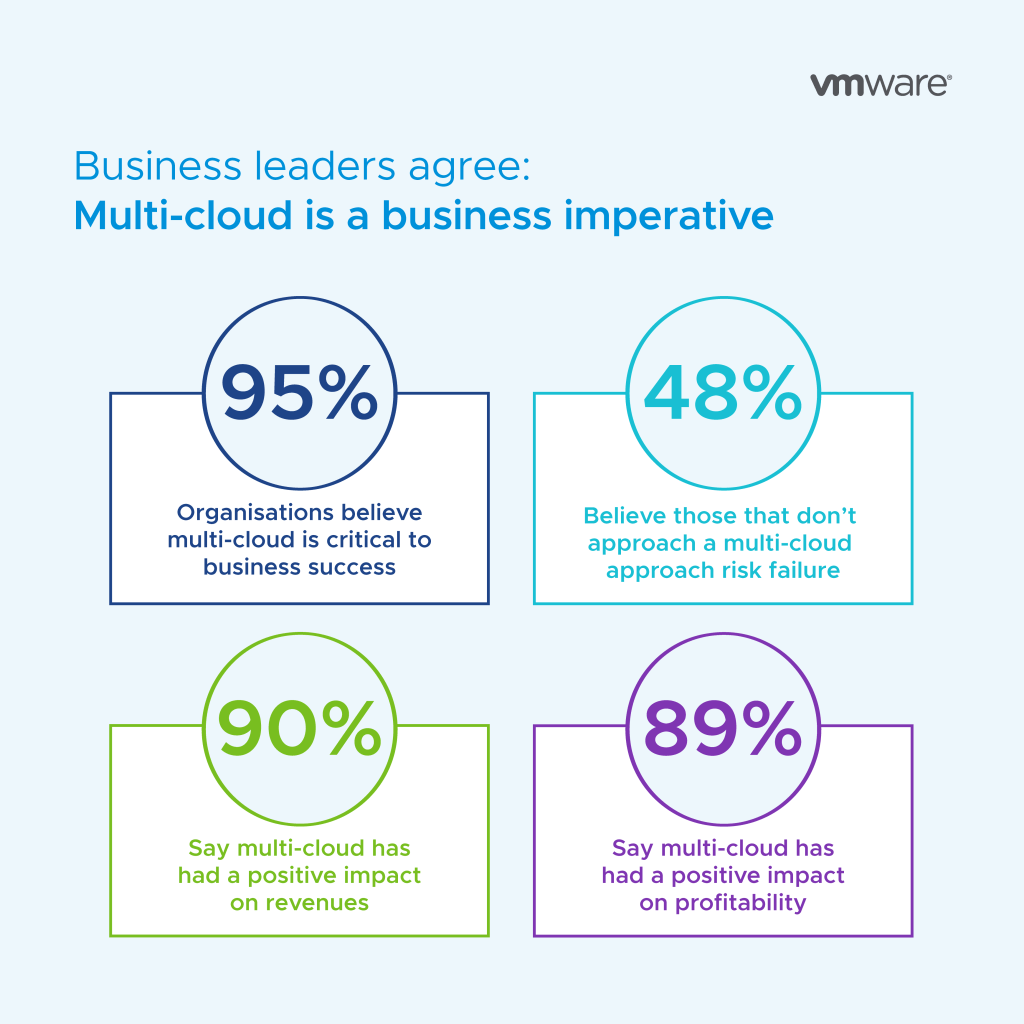
2. The number of public clouds in use is on the rise. But more doesn't always equate to better.
Today, organisations are on average using 2.2 public clouds, which is expected to increase to 2.8 over the next five years. But finding the multi-cloud sweet spot is critical, as managing multiple cloud environments has its complexities, and can become unmanageable.
Interestingly, hyper-growth (45%+ yearly revenue increase) companies actually use fewer public clouds than shrinking or low-growth (5%- yearly increase) companies – with the former group using an average of 2.3 compared to the latter group using an average of 3.7. This indicates that hyper-growth companies are adopting a more thoughtful, strategic approach to multi-cloud, ensuring that they are maximising the potential of each individual cloud.
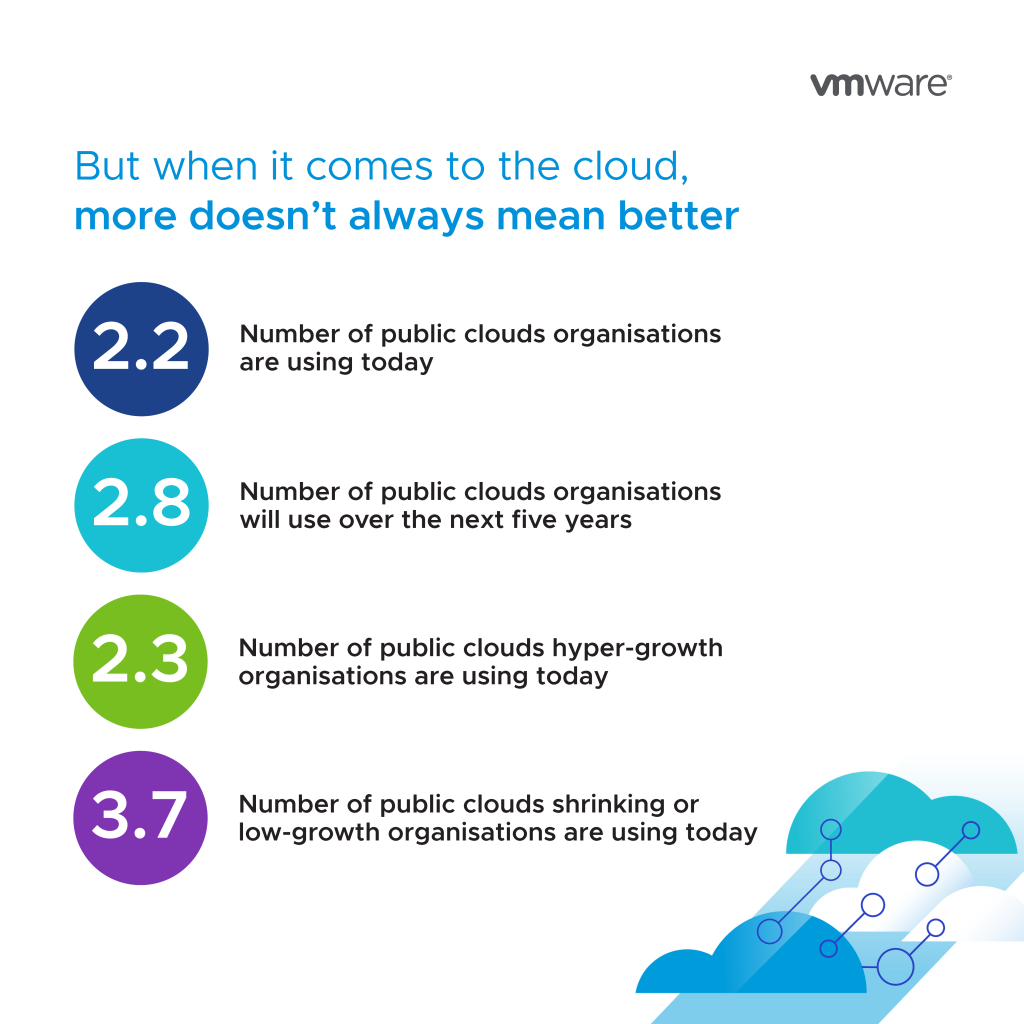
3. Businesses are finding ways to unlock the potential of multi-cloud.
89% of respondents from multi-cloud organisations say that they’re using apps that were built to run across multiple public clouds, as well as in their on-premises environments. This enables them to increase app dev, DevOps, and/or IT productivity (45%) and improve resilience (37%). Organisations with apps built to run across multiple clouds (hybrid apps) are also more likely to appreciate the role that a multi-cloud approach plays in critical business functions.
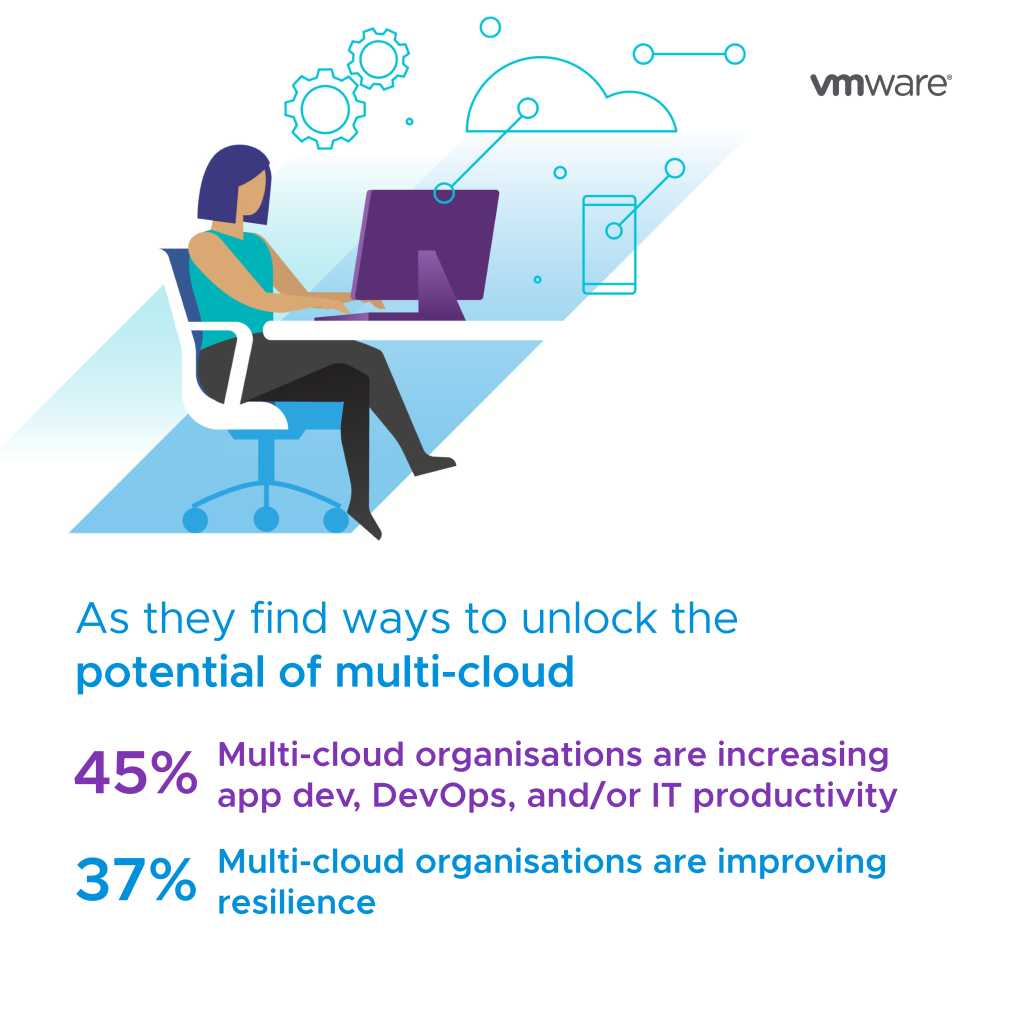
4. Multi-cloud helps organisations manage data wherever it resides.
Organisations are increasingly collecting data from customers all over the world, and with national and industry regulations getting more complex by the day, data sovereignty (i.e. the principle that data is subject to the privacy laws within the nation where it is collected and stored) is top of mind. So much so, that the vast majority (95%) of respondents reported that is a key concern. Luckily, multi-cloud strategies are making it easier to manage and protect data wherever it resides by allowing organisations to work with sovereign cloud providers. These providers are key to ensuring that data is protected, compliant, and resident within a national territory.
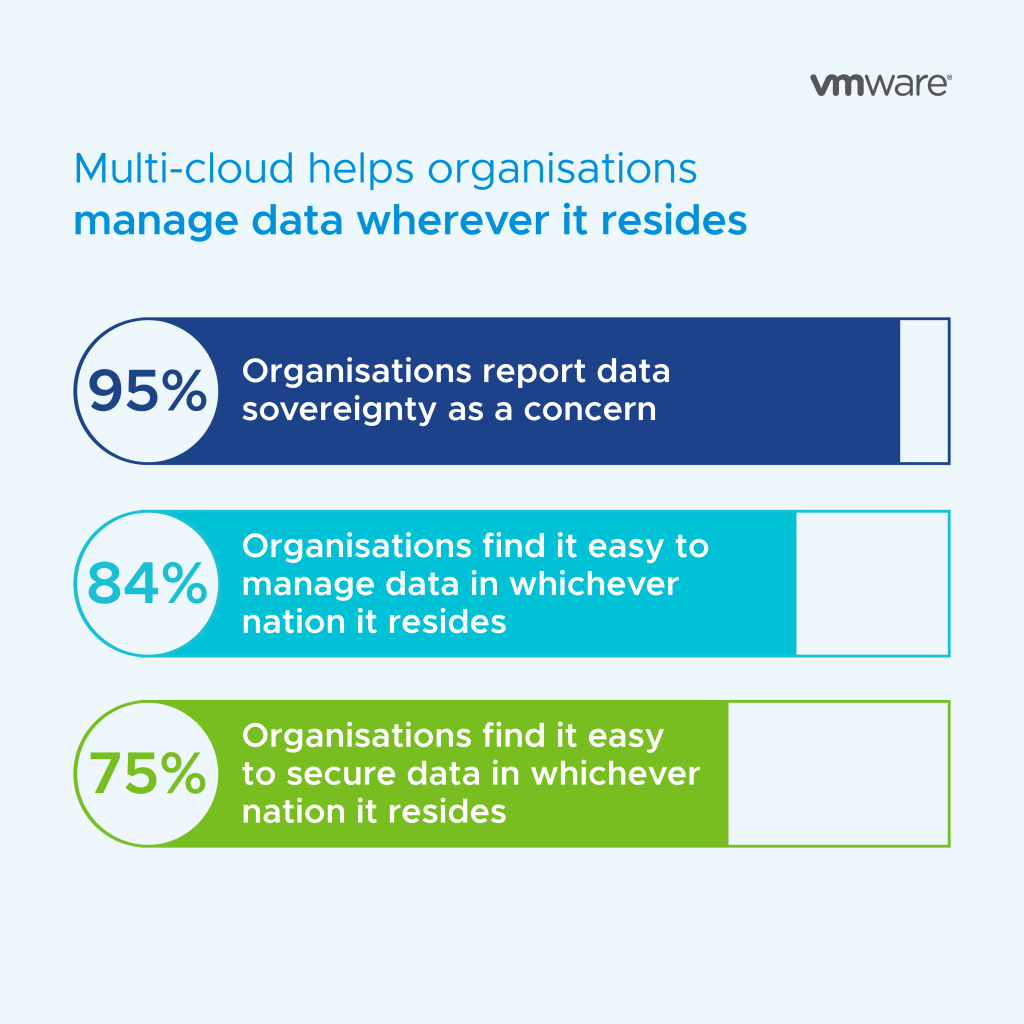
5. From chaos to clarity – cloud smart organisations can lead the way.
Despite the clear benefits, embarking on a multi-cloud journey is rarely without its challenges, with increased cybersecurity risks (35%) cited as the number one obstacle associated with multi-cloud. More clouds also require more (and different) talent, with 33% of organisations citing the lack of in-house talent as a major challenge in being able to successfully implement a multi-cloud strategy. But a fifth (19%) of organisations – considered to be ‘cloud smart’ – are ahead of the pack, tackling these challenges head on and can act as a beacon for those still on their way. These cloud smart organisations have the freedom to choose the best cloud for each application, whether public, edge, or private. They’re not locked into a multi-year contract with a single cloud provider, facing skyrocketing costs as a result, and they’re empowered to control their data.
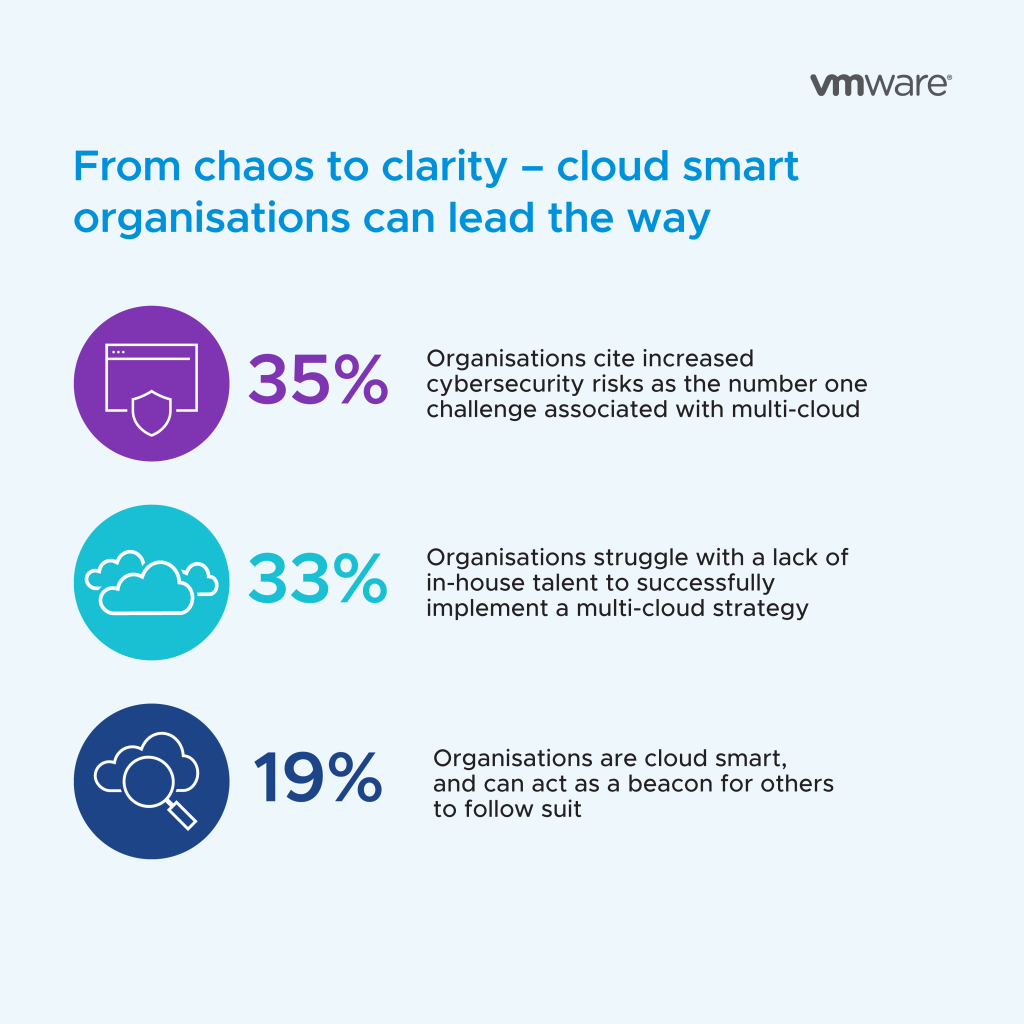
Are you ready to take control of your multi-cloud environment?
Wherever you are on your own multi-cloud journey, from our research, it’s clear that organisations are increasingly seeing the benefits of using multiple public clouds, integrated with their on-premises private cloud, and are turning to them in their thousands. For a deeper dive into our findings, you can download our Multi-Cloud Maturity Index report here. And if you don’t know where to start or are struggling with the complexity of managing multiple clouds, we’re here to help businesses move from chaos to cloud smart. Our multi-cloud solutions can help organisations choose the right cloud for the right workload, build new apps anywhere, meet data sovereignty needs, and create consistent infrastructure and operations all the way to the edge. And for those organisations looking to repatriate some of their data or apps, even temporarily or partially, our hybrid cloud approach can help deliver consistent IT operations so that workloads can be scaled out to public cloud and back on-premises as needed.

